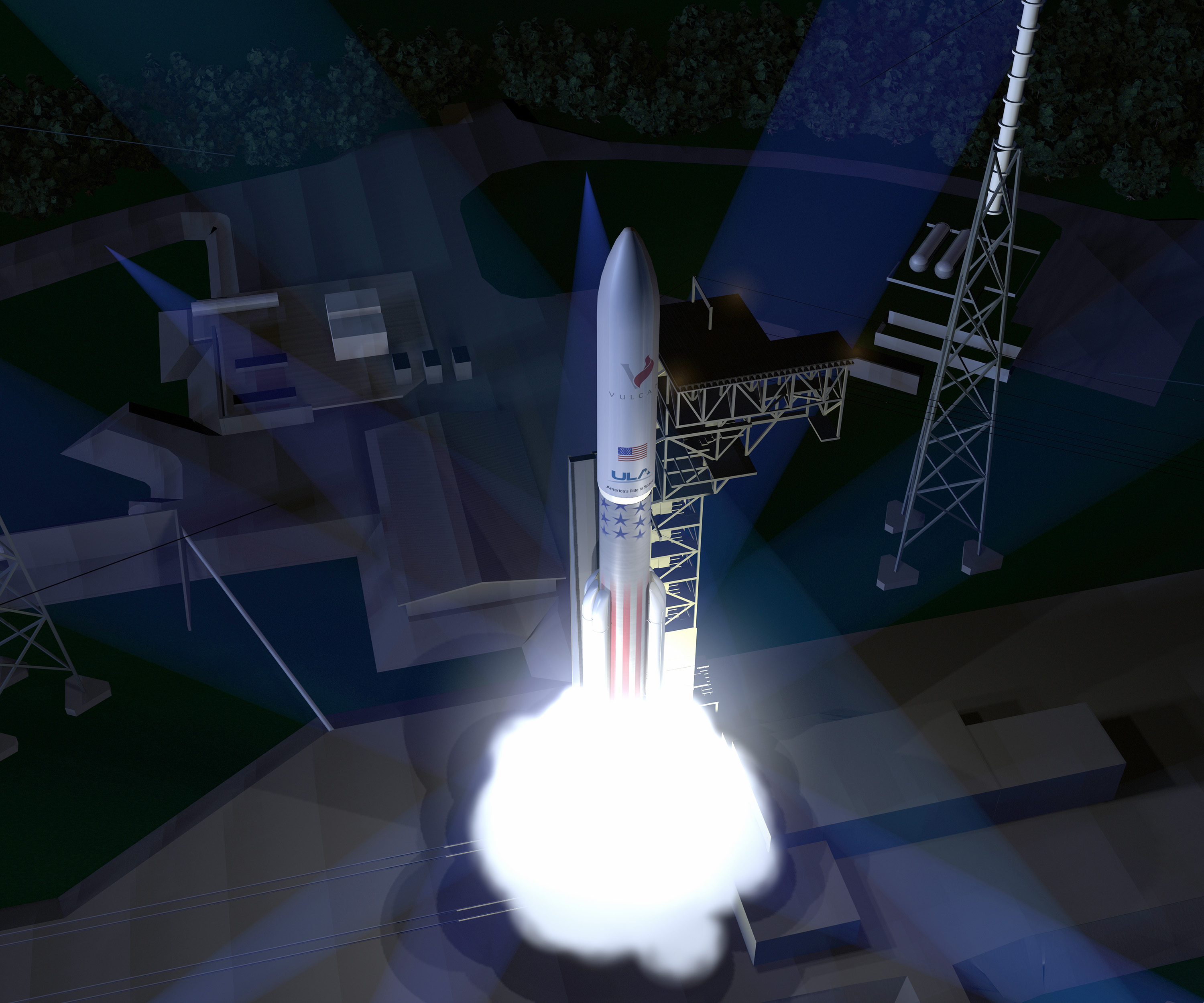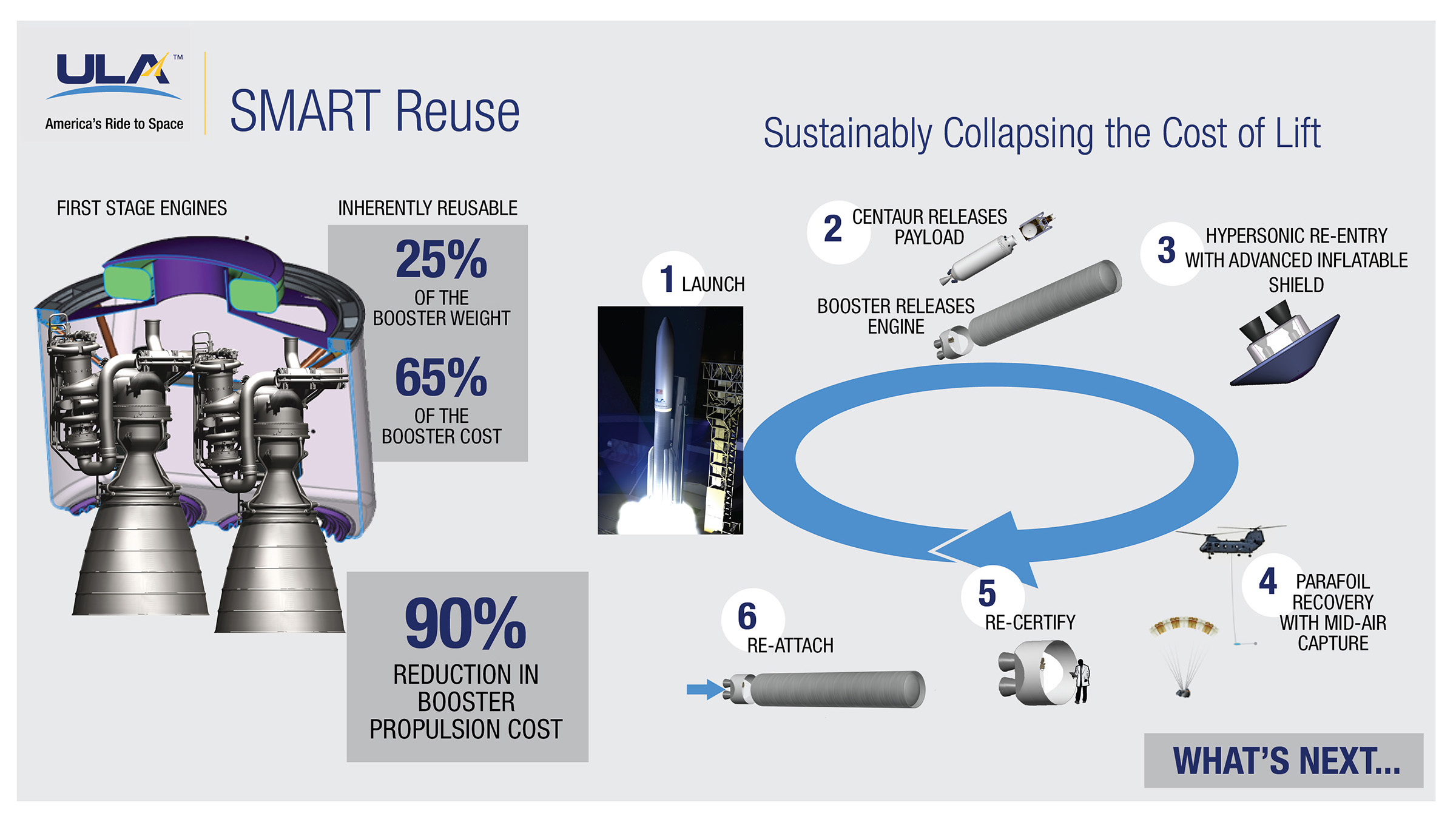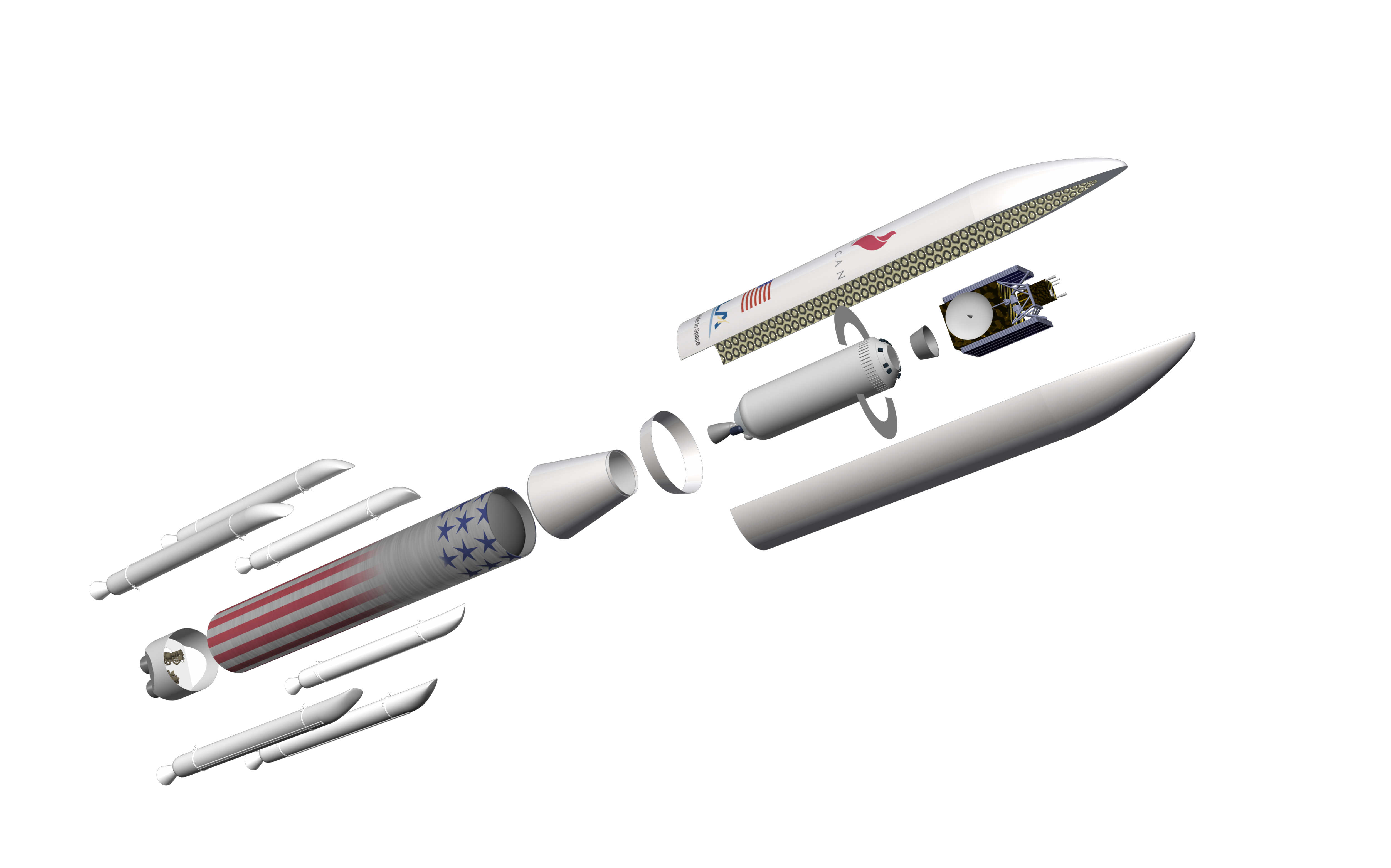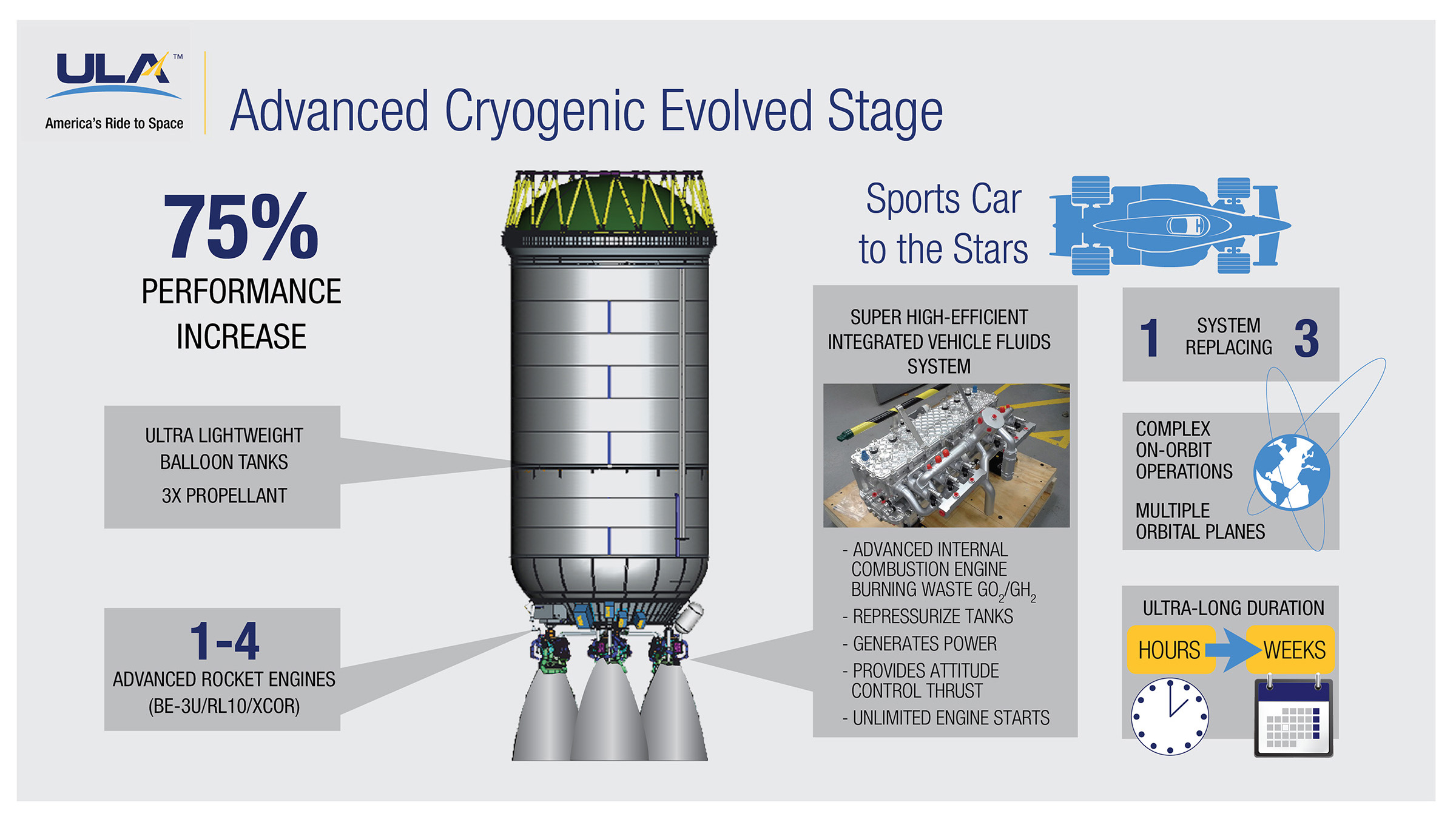New Vulcan reusable rocket
Instead of saving the entire first stage, it is proposed to use only its engines
 As a result of the vote, the name Vulcan was chosen for the new United Launch Alliance rocket. Among the competitors were Oryol, Liberty, Zeus, and GalaxyOne, and more than a million votes were received. According to the ULA itself, Vulcan is a new generation launch system that is designed to make satellite output cheaper and more affordable. This will be achieved, inter alia, by catching part of the missiles with helicopters.
As a result of the vote, the name Vulcan was chosen for the new United Launch Alliance rocket. Among the competitors were Oryol, Liberty, Zeus, and GalaxyOne, and more than a million votes were received. According to the ULA itself, Vulcan is a new generation launch system that is designed to make satellite output cheaper and more affordable. This will be achieved, inter alia, by catching part of the missiles with helicopters. The United Launch Alliance is a joint venture between Lockheed Martin and Boeing. To launch spacecraft ULA usesexpensive Russian engines, as a result, the current Atlas rocket cannot compete with SpaceX's Falcon 9. The brainchild of Ilona Mask has been delivering cargo to the International Space Station for two years now and regularly reduces launch costs.
On April 13, at a presentation in Colorado, ULA CEO Tori Bruno spoke about the future of the enterprise. Plans were announced for the next 20 years, until 2035. This included the replacement of Atlas and Delta missiles, the replacement with fully American engines and an optimistic plan for their reuse. Bruno confidently stated that the new launch system will be the most productive and cost-effective, so it will fundamentally change the way the United States uses space.
The first launch of Vulcan is scheduled for 2019. It will be implemented either using two Blue Origin BE-4 engines using liquefied gas, or using a pair of more traditional kerosene Aerojet Rocketdyne AR-1. On what to fly, they will choose next year. Thus, rejection will be made of the RD-180 purchased from Russia . The creation process is quite expensive, so the rocket will be developed in several stages. We are talking about billions: specific figures are not called, but historically it is known that the development of a new rocket engine costs $ 1 billion, and the start of work on a new rocket - about 2 billion. First, the first stage with an American engine will be worked out. Part One Reuse Plan, ULA

The reuse of rocket parts is an important component of the Volcano. Not always the hardest in a rocket is the most expensive. ULA believes that reuse does not consist in soft landing the entire first stage. Instead, it is proposed to return only a small but expensive part of the step; it is simpler and cheaper. ULA Technology is called Sensible, Modular, Autonomous Return Technology (SMART). Marching and steering engines will be caught in the air, this is the most expensive part of the first stage. The ULA plan is for the lower part of the rocket to disconnect after completion of the first stage. Then, using inflatable thermal protection, it enters the atmosphere. Parachutes will open, the helicopter will catch the engine block and land with it.

For comparison: SpaceX is forced to leave some part of the fuel in the tanks of the first stage of the Falcon 9 in order to perform three subsequent starts to suppress speed, brake when entering the atmosphere, and soft land on the platform. This affects the overall performance: this small amount of fuel could be used to output the payload. But by the first flight of the “Volcano” in 2019, SpaceX will probably work out landing the first stages of the Falcon 9. By the way, the next attempt will take place today at 23:10 Moscow time .
Like Delta and Atlas, Vulcan will be modular with different sizes of head fairings or with additional starting boosters, which will increase productivity if necessary. This modularity distinguishes ULA from other players: SpaceX has the usual Falcon 9 and the planned heavy version, Arianespace can offer only Vega and Soyuz, but there are no gradations. "Volcano" will be available in 12 versions from medium to heavy class. A four-meter variant, the ULA Rocket will be available with head fairings with a diameter of either four or five meters. In the first option, you can put up to four solid fuel boosters, in the second - up to six. In the latter case, the rocket will become an analogue of the heavy modification Delta 4. Five-meter version, ULA


The first step is to create the first step. The second development step will be the creation of a new second stage called the Advanced Cryogenic Evolved Stage. It will be powerful enough to replace the heavy version of Delta 4. The stage will have from one to four engines from Aerojet Rocketdyne, XCOR or Blue Origin - again, they have not had time to choose yet. The first start of the second stage is scheduled for 2023. Prior to this, the already existing Centaurus will stand as the second stage of the Volcano . ULA

With 10-20 launches per year, the cost of the most basic version of the Vulcan rocket will be about $ 100 million (the existing Atlas 5 costs $ 164 million). But it is important to provide at least 10 launches per year, otherwise the cost will increase. Between 2018 and 2022, the Air Force and the United States National Aerospace Intelligence Administration will do about five launches instead of the usual ten, about five times a year. It is planned to fill the formed "hole" with civilian launches, including for NASA. In the next few months, it will be determined from which launch sites the Volcano will be launched: either Cape Canaveral in Florida or Vandenberg Base in California.
